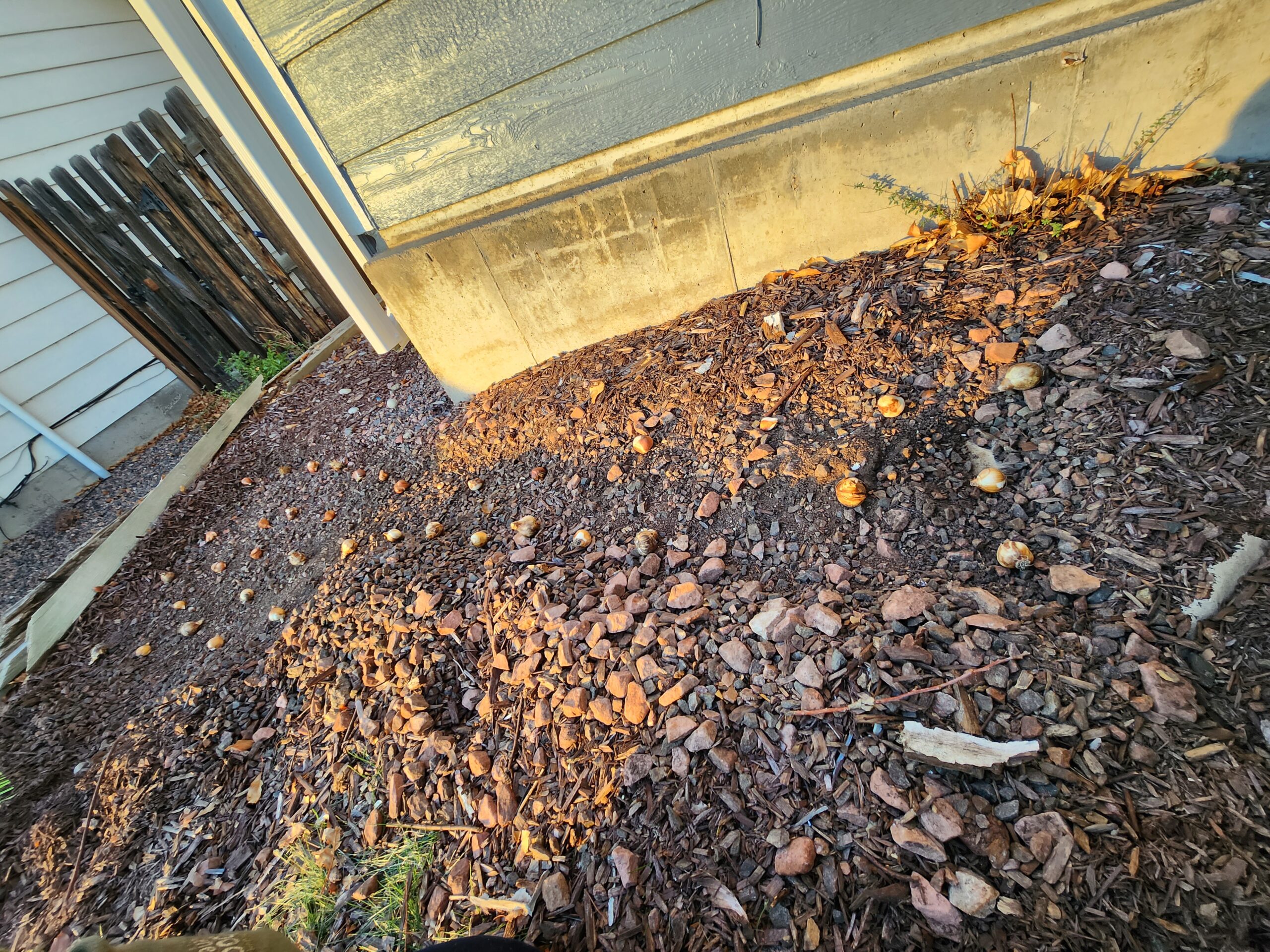
Bulb bed preparation is key to developing a successful bulb garden. If the site you have selected for your bulb bed is in established turf, you will need to kill the turf with a contact systemic herbicide such as Roundup or Finale.
After the herbicide has done its job, remove the dead plant material, old roots and large rocks. Then loosen the soil with a spading fork and add two to three inches of sphagnum peat moss, or some other well-composted organic matter. Do not use poorly composted manures or native peats because they provide salts, which are detrimental to normal bulb growth.
Fertility is as important to bulbs as it is to any other plant. Bulbs that are planted for a long duration, such as daffodils, require a slow-releasing phosphorus, such as simple super phosphate 0-20-0. Apply fertilizer according to soil-test results. Add a general purpose inorganic fertilizer, such as a 5-10-5 to provide all additional nutritional bulb needs.
Bulbs should be planted deeper than seed, usually three to four times the diameter of the bulb. Bulbs prefer a sandy or clay loam soil, but be sure to plant them two inches deeper when you plant them in sandy soil. After the ground freezes, cover the bed with three to four inches of mulch to prevent frost heaving. Gradually remove the mulch over a period of several weeks starting in late March or early April.
For “How to force bulbs indoors” refer to message number 1319.
For more information, see the following Colorado State University Extension fact sheet(s) and CMG GardenNotes.
- Vegetable garden: Soil Management and Fertilization
- Choosing A Soil Amendment
- Fall-Planted Bulbs and Corms



